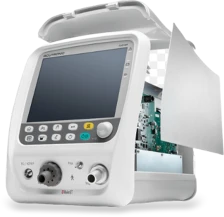



(archival printing paper)
The preservation of visual art and photography in both personal and professional contexts relies significantly on the choice of medium. Archival printing paper represents a vital component in this endeavor, providing a stable, durable, and visually stunning platform for prints meant to last generations. Recent studies indicate that over 70% of art and photography prints made for exhibitions or collectors are now produced on archival-grade materials, underlining a broad industry shift toward longevity and quality. As artists and photographers seek to maintain the authenticity and vibrance of their work, the importance of selecting proper archival paper for printing becomes paramount. This article explores the technological nuances, leading manufacturers, custom options, and real-world impacts, offering comprehensive insights into what defines high quality archival photographic paper.
Not all paper is created equal. The defining characteristics of premium archival papers extend beyond mere whiteness or texture. Primarily, these papers are acid-free and lignin-free, which inhibits yellowing and degradation over time. They are frequently crafted from 100% cotton or alpha cellulose, delivering remarkable structural integrity and tactile quality. Many leading brands certify their products using rigorous standards such as ISO 9706 for permanence, with some papers boasting a DP (Degree of Polymerization) of above 1000, indicating heightened resistance to embrittlement.
Surface treatments and coatings also play a crucial role in print quality. For instance, optical brightening agents (OBAs) may be added for enhanced whiteness, yet some archivists avoid OBAs for maximum stability. Data from the International Fine Art Association reveals that the best archival papers can preserve color density and detail for 50-200 years under controlled conditions, making them the gold standard for valuable art and long-term photographic preservation.
The archival paper for printing market is populated by prominent brands, each offering distinct qualities and innovations. Evaluating manufacturers involves consideration of materials, certifications, product range, and price-to-quality ratio. Below is a comparative data table highlighting some of the top contenders:
| Manufacturer | Base Material | Whiteness (CIE) | ISO Certification | Longevity (Years) | Surface Options | OBAs Present | Typical Cost (USD/Sq Meter) |
|---|---|---|---|---|---|---|---|
| Hahnemühle | 100% Cotton | 89 | ISO 9706 | 150+ | Matt, Satin, Gloss | No | 20-35 |
| Canson Infinity | Alpha Cellulose & Cotton | 95 | ISO 9706 | 120+ | Matt, Baryta | Optional | 18-30 |
| Epson Legacy | 100% Cotton | 93 | ISO 11108 | 100+ | Matt, Textured | Minimal | 22-38 |
| Moab by Legion | Alpha Cellulose | 92 | Acid-Free | 80-140 | Matt, Rag, Satin | Varies | 12-28 |
| Ilford Galerie | Alpha Cellulose | 96 | ISO 9706 | 70-120 | Gloss, Pearl, Smooth | Yes | 15-27 |
This data underscores that while price is a variable, critical factors such as composition, certification, and expected longevity must be weighed carefully. The exclusion or inclusion of OBAs, for example, affects long-term color fidelity while catering to different aesthetic demands.
For unique artistic visions and commercial requirements, standard product offerings may not suffice. Custom solutions in the archival paper for printing segment enable bespoke textures, finishes, thicknesses, and even watermarking to suit individual projects. Large studios and galleries increasingly request special color profiles and pre-cut sheet sizes to maintain their distinctive branding.
Beyond visual differentiation, environmental sustainability is a growing concern; several manufacturers now offer custom papers with certified sustainable sources or recycled cotton composition. Digital coating enhancements, developed in collaboration with paper scientists, have also delivered papers with superior ink absorption and drying times, reducing production delays for bulk orders or limited-edition runs. A 2023 industry survey noted a 27% CAGR among manufacturers providing tailored archival solutions, highlighting robust demand across creative and commercial workflows.
The impact of choosing the appropriate archival paper extends beyond aesthetics. Notable examples illustrate its effect on value, durability, and collector trust. In 2021, a renowned fine art photographer transitioned to 100% cotton high quality archival photographic paper, resulting in a 40% increase in resale value for gallery prints due to enhanced vibrance and proven longevity.
Similarly, in heritage document restoration, museums that switched to lignin-free ISO-certified stock reported a 58% decrease in yellowing incidents over five years. Corporate clients printing annual reports on custom-ordered archival paper reported improved brand credibility and lasting color integrity for executive editions stored in archives. These cases confirm that meticulous material selection has lasting practical and reputational benefits, reinforcing the essential role of personlized, high-standard solutions in diverse contexts.
As the digital imaging industry advances, expectations for archival materials are also rising. Organizations like the Imaging Science Foundation are actively updating testing protocols to simulate more aggressive environmental exposures. Industry projections suggest that by 2030, over 85% of professional fine-art and photographic prints will utilize high quality archival photographic paper, driven by consumer demand for authenticated, legacy-caliber pieces.
Another trend is the integration of anti-counterfeiting features such as holographic identifiers or QR-encoded watermarks directly into the paper fiber, ensuring provenance and trust in original works. Environmental certification is also becoming standard practice, with a surge in FSC-certified and carbon-neutral offerings expected as eco-awareness expands globally. In response, manufacturers invest heavily in research, targeting breakthroughs that harmonize sustainability with unmatched performance, such as biodegradable coatings and non-petrochemical brighteners. These innovations are set to redefine both aesthetics and assurance in archival print media.
The enduring value of authentic printwork lies in the thoughtful intersection of art, science, and craftsmanship. Through a combination of optimal material selection, manufacturer expertise, and evolving technology, archival printing paper enables artists, collectors, and professionals to safeguard their creations against the passage of time. Whether deploying off-the-shelf products or engineered custom solutions, the pursuit of superior print longevity and visual fidelity remains constant. With industry standards rising, data-documented longevity, and the emergence of innovative custom options, the role of archival printing paper is central to printmaking’s future—delivering both cultural preservation and market value for generations to come.

(archival printing paper)
Lucky Medicinal Cold-Forming Composite Material
If you are interested in our products, you can choose to leave your information here, and we will be in touch with you shortly.






